
How to use magic mushroom liquid cultures
Liquid cultures are a must-have for anyone growing mushrooms at home. Learn how to use them to produce large flushes of potent mushrooms in express time!
Liquid cultures take advantage of live mycelium to fast-track magic mushroom cultivation. Though using them might seem daunting at first, they offer a foolproof and efficient way to pump out excellent mushroom harvests with minimal effort, making liquid cultures an excellent option for beginners!
Whether you’ve made your own or bought a ready-made liquid culture, this short guide walks you through exactly how to use liquid cultures to grow magic mushrooms in any setting.
Note that this article assumes that you’re already familiar with what liquid culture is. For a general introduction to liquid cultures and their many benefits, or to learn the difference between liquid cultures and spore syringes, check out our dedicated articles.
Equipment and materials for using liquid culture
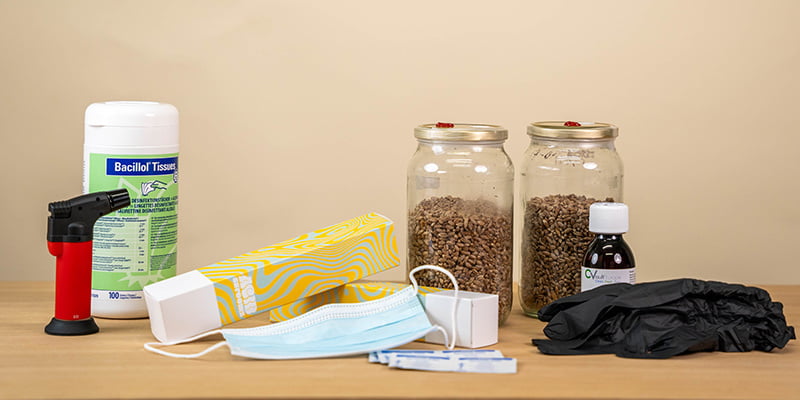
Using liquid culture is simple, regardless of whether you’ve made your own culture or bought a ready-made syringe. In a nutshell, the process involves inoculating a medium and waiting for the culture to colonize it. To find success with a liquid culture, however, you’ll need the right equipment and process, as well as a solid understanding of sterile technique.
Equipment
- Liquid culture syringe
- Sterile container and substrate (our sterile substrate kit provides both)
- Isopropyl alcohol
- Sterile gloves
Instructions
There are many different ways to use liquid cultures, and each grower’s approach might vary slightly depending on their setup and experience. Below, we’ll walk you through a simple yet effective process for using liquid culture to grow magic mushrooms. We'll be using a pre-made Sterile Substrate Kit (ideal for beginners).
- Wash and sanitize your hands. Wipe down your workspace and equipment with isopropyl alcohol, and put on sterile gloves.

- Shake your liquid culture syringe to evenly distribute the mycelium inside it.

- Inoculate the kit by sticking the syringe into the medium through the injection port. Use 2–5 ml of liquid culture for every liter (34 oz) of medium.

- Cover the kit and set it aside in a warm, dark place. Mycelium does not need light to grow and thrives at a stable temperature of 73-74°F. Use a thermometer to monitor the temperature and (if necessary) a mushroom heat mat to keep your medium warm.
- Wait for your kit to be fully colonized. This can take several weeks, depending on the species of mushroom you’re growing (see colonization times below).

- Once your kit is fully colonized, it's time to begin fruiting. To do this, remove the lid, fill the kit with cool, distilled water, and place it in the fridge for 24 hours.
- Drain the water from your kit and place it inside its fruiting chamber.

- Use a heat mat to keep the temperature between 70–75°F and mist the chamber regularly to keep RH at 95%. Use a thermo-hygrometer to monitor temperature and humidity levels.

- Give your mushrooms some natural light to help orient their growth and open the chamber twice daily to allow for some air exchange. Also, stir your inoculated medium 2–3 times per week to ensure the mycelium grows evenly throughout.
- Harvest your mushrooms once they are mature, and repeat step 8 until your kit stops producing mushrooms.

Using liquid culture without a sterile substrate kit
Zamnesia substrate kits are prepared and packaged in sterile laboratory conditions to minimize the risk of contamination. Whether you’re new to growing magic mushrooms or not, these kits make the process almost foolproof.
If you prefer not to use one of these kits, you’ll need to sterilize your medium and growing container at home. The simplest way to do this is:
- Fill glass jars or spawn bags with the grain of your choice. Seal the jars or bags with micropore tape.
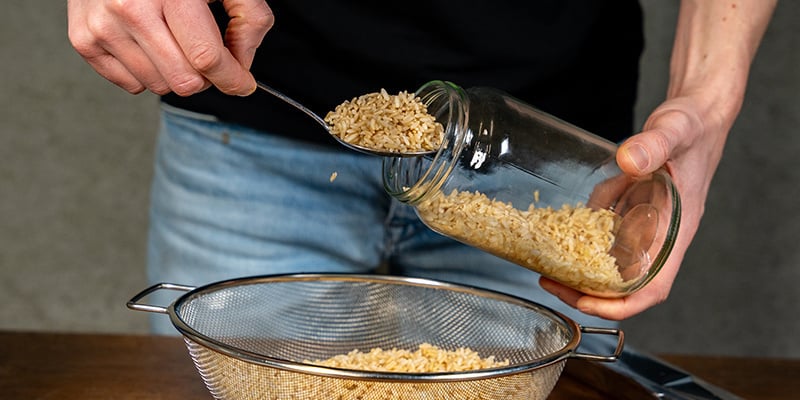
- Place the jars atop a steel rack inside a pressure cooker. Put a small amount of water at the bottom of the cooker, seal it, and place it on the stove.
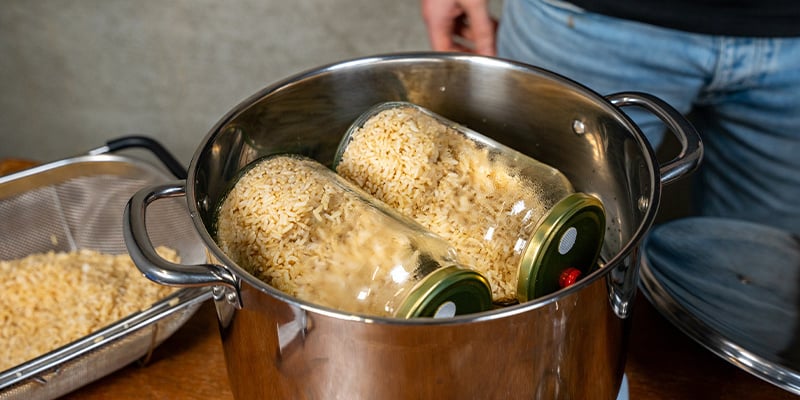
- Once the internal pressure reaches 15 psi, cook your jars and medium for 60–90 minutes.
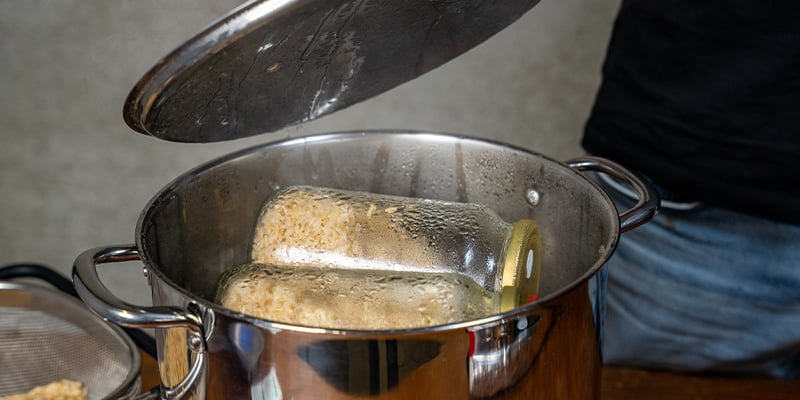
- Remove the jars and let them cool completely before inoculating them with a liquid culture syringe.
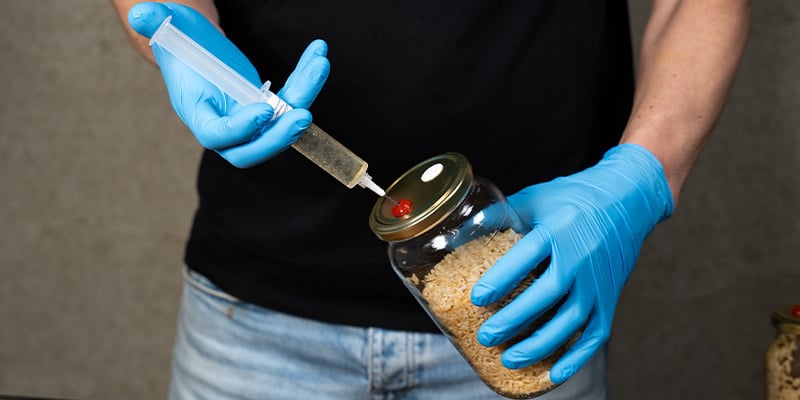
After inoculating your jars or bags, follow the same instructions as in steps 4–10 listed above.
Liquid culture colonization time
The time it takes for a liquid culture to colonize a medium varies largely depending on the variety of mushroom you're growing.
| Species type | Examples | Colonisation time |
|---|---|---|
| Fast | B+, Cambodian | 7–12 days |
| Moderate | PES Amazonian, Golden Teacher, Albino A+, Ecuador | 9–14 days |
| Slow | Penis Envy, Mazatapec, McKennaii | 12–21 days |
Other factors that can affect the colonization speed of your liquid culture include:
- Temperature (70–75°F is ideal)
- The quality of your starting culture
- Stirring frequency (an inoculated medium should be stirred 2–3 times weekly)
- The nutrient content and quality of your medium
- The amount of liquid culture you used at inoculation
Identifying healthy vs contaminated liquid culture
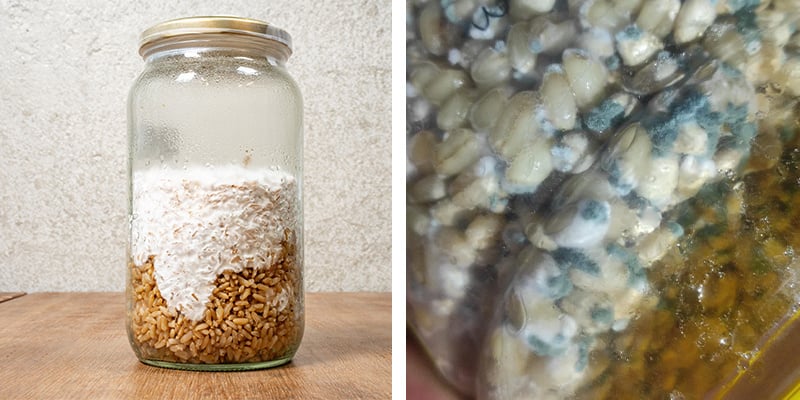
A healthy liquid culture will contain white mycelium in the form of strands or "snowflakes." The culture will also have a slightly cloudy appearance and a distinct mushroom-like smell.
Contaminated cultures, on the other hand, may have green, pink, or black hues and a foul smell. Note, however, that contamination isn’t always visible. The best way to avoid wasting time, effort, and money incubating a contaminated liquid culture is by buying your cultures from reputable brands and retailers like Zamnesia.
Liquid culture troubleshooting
The failed colonization of a liquid culture is almost always caused by:
- Poor technique when making or inoculating the culture
- Poor culture quality
- Inoculating an already contaminated culture
- Sub-par incubation conditions (temperature and humidity levels that are either too high or too low)
- A lack of fresh air exchange during fruiting
When using liquid cultures, follow the instructions above to minimize contamination and enjoy a successful harvest. Also, consult the table of colonization times we mentioned earlier to familiarize yourself with how long it might take your culture to properly take over a medium.
If you see no signs of colonization in your medium after three weeks, check for signs of contamination. If your medium smells and looks putrid, discard it immediately. If not, give it another week, then discard it if it still shows no signs of life.
Using liquid cultures: Bountiful mushroom harvests await
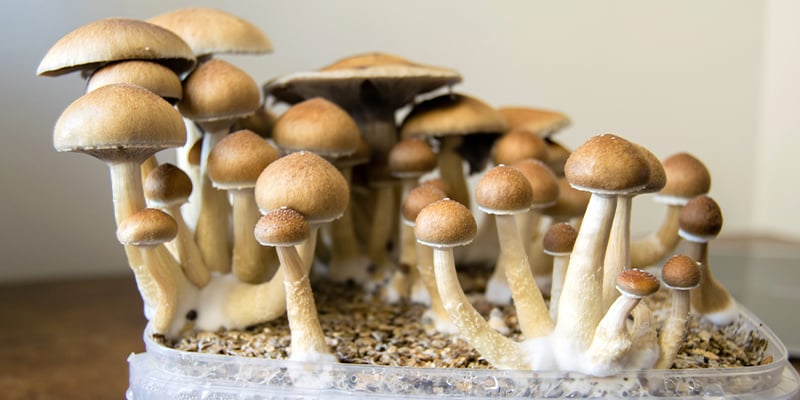
Liquid cultures make it easy to grow magic mushrooms at home. However, using them properly depends on good sterile technique, cleanliness, and proper inoculation. Luckily, Zamnesia’s array of mushroom products makes the process super simple.
If you’re familiar with growing mushrooms, check out our line of liquid cultures and growing supplies and enjoy the freedom of growing a wide variety of mushrooms in different settings and setups.
Please note: The legality of buying or using liquid cultures varies significantly by country or region. Always check your local laws before purchasing or beginning any mushroom cultivation.
-
 4 min
August 29, 2025
How to make liquid culture
Packed with live mycelium, liquid cultures fast-track home mushroom cultivation and produce bountiful flushes with minimal effort. Best of all, our simple recipe makes creating your own liquid...
4 min
August 29, 2025
How to make liquid culture
Packed with live mycelium, liquid cultures fast-track home mushroom cultivation and produce bountiful flushes with minimal effort. Best of all, our simple recipe makes creating your own liquid...
-
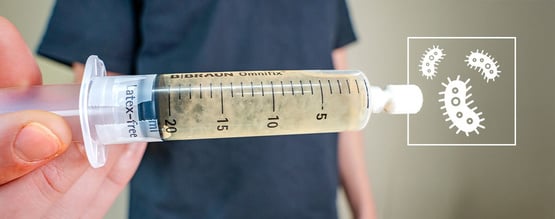 3 min
July 11, 2025
What is liquid culture? The complete beginner's guide
New to mushroom cultivation and curious about liquid cultures? You’re in the right place. Liquid cultures are one of the easiest and most effective tools for inoculating a medium and growing...
3 min
July 11, 2025
What is liquid culture? The complete beginner's guide
New to mushroom cultivation and curious about liquid cultures? You’re in the right place. Liquid cultures are one of the easiest and most effective tools for inoculating a medium and growing...
-
 5 min
July 29, 2024
How To Store Magic Mushrooms
If you want your shrooms to stand the test of time, then you'll need to not only dry them properly, but store them adequately too. While not difficult, it is important to get this right if you want...
5 min
July 29, 2024
How To Store Magic Mushrooms
If you want your shrooms to stand the test of time, then you'll need to not only dry them properly, but store them adequately too. While not difficult, it is important to get this right if you want...
-
 3 min
August 11, 2023
Liquid Culture Syringes Vs Spore Syringes: A Comparison
Fancy yourself a budding mushroom cultivator? If so, you need to know the differences between spore syringes and liquid culture. In this comprehensive guide, we clear up any misinformation...
3 min
August 11, 2023
Liquid Culture Syringes Vs Spore Syringes: A Comparison
Fancy yourself a budding mushroom cultivator? If so, you need to know the differences between spore syringes and liquid culture. In this comprehensive guide, we clear up any misinformation...





 United States
United States










